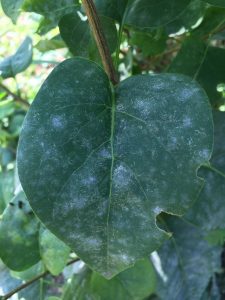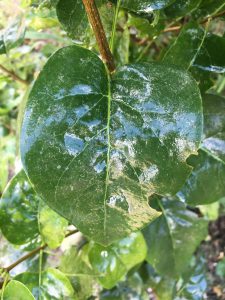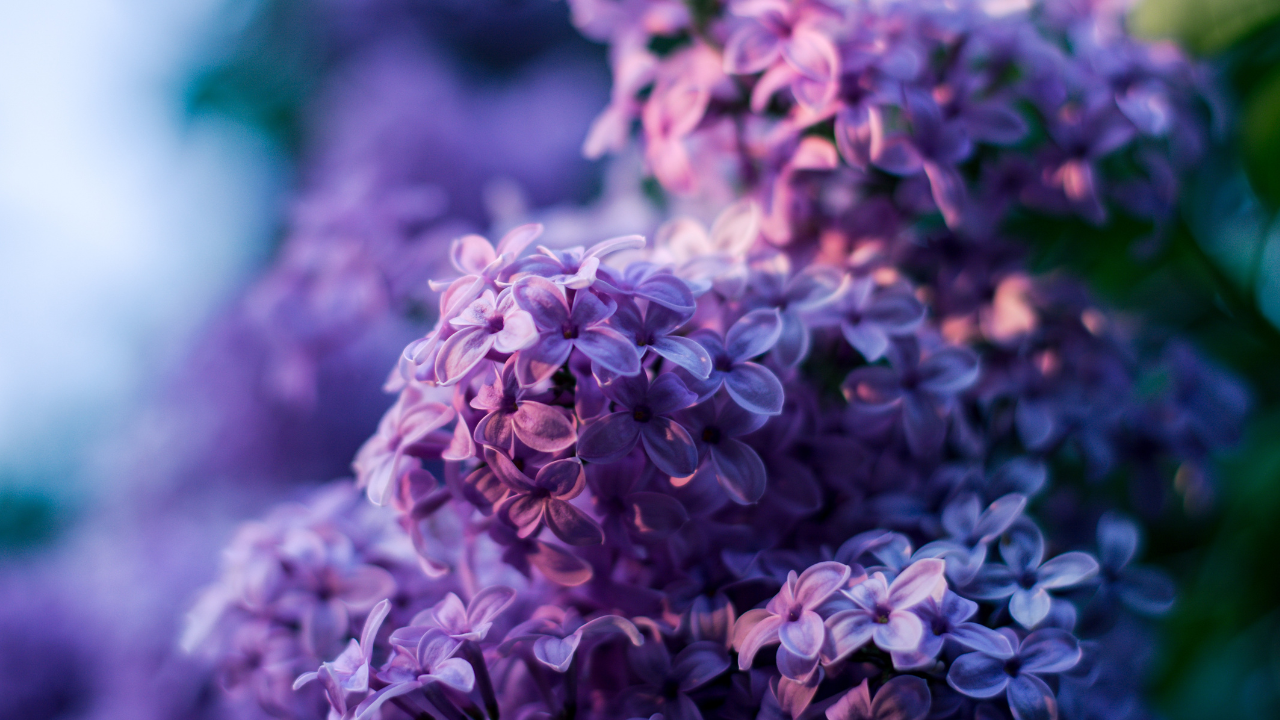What is Powdery Mildew?
Powdery Mildew is a fungal disease that is specific to various plant species. It can be easily identified by the white, powdery growth areas that develop on the leaves, flowers, and stems of plants. Typically, the disease starts at the base of plants and moves its way up to the top, and is able to infect newer growth more easily than old, tougher growth. Powdery Mildew is species specific, meaning, if the disease is infecting lilac bushes it will not spread to nearby strawberry bushes or pumpkins, the powdery mildew will only spread to more lilac bushes.
Fortunately, powdery mildew does not pose major health concerns for plants. It is mostly an aesthetic issue that covers the plant in its white, fungal powder. However, overtime if it is not controlled, the disease will gradually weaken the plant and become a more serious problem. This fungus is able to survive in the winter by becoming dormant in debris beneath the host plant, like fallen leaves. It is able to spread to other plants by releasing spores which are carried in the air, and by various sucking insects that can carry the pathogens. Unlike other fungi, powdery mildew does not need free standing water to grow, it relies on high humidity for its life cycle.
In this post, we will be looking specifically at powdery mildew on lilac bushes.

TweetMint Plant Wash Treatment
TweetMint Plant Wash can safely, and effectively eliminate mold & mildew on ornamental plants. For powdery mildew, simply use a dilution ratio of .5 oz (1 tbsp) of TweetMint concentrate per gallon of water. Always start with a lower dilution and then work up to a higher dilution for more resistant or stronger fungi to gain control (increase by half an ounce or 1 tbsp). Spray fronts & backs of leaves, stems, and flowers in order for TweetMint to come into direct contact with the fungus.
TweetMint Plant Wash can be used as a preventative to prevent an issue before it even starts! Using a Light Dilution of .5 oz (1 tbsp) of TweetMint concentrate per gallon of water, spray 1-2 times a week when watering plants to eliminate spores before they have time to develop.
Try to apply either earlier in the morning or later in the evening to avoid applying in the heat of the day. A common method among growers is to apply TweetMint Plant Wash whenever watering is taking place. TweetMint Plant Wash leaves no residual, so once the product dries it will be gone. This is very good for beneficial insects, such as: bees, butterflies, and praying mantises because there will be no residual that could pose a risk!

Give yourself and your plants the Royal TweetMint and help become more sustainable, green, and safe by choosing natural alternatives!
-Gage




